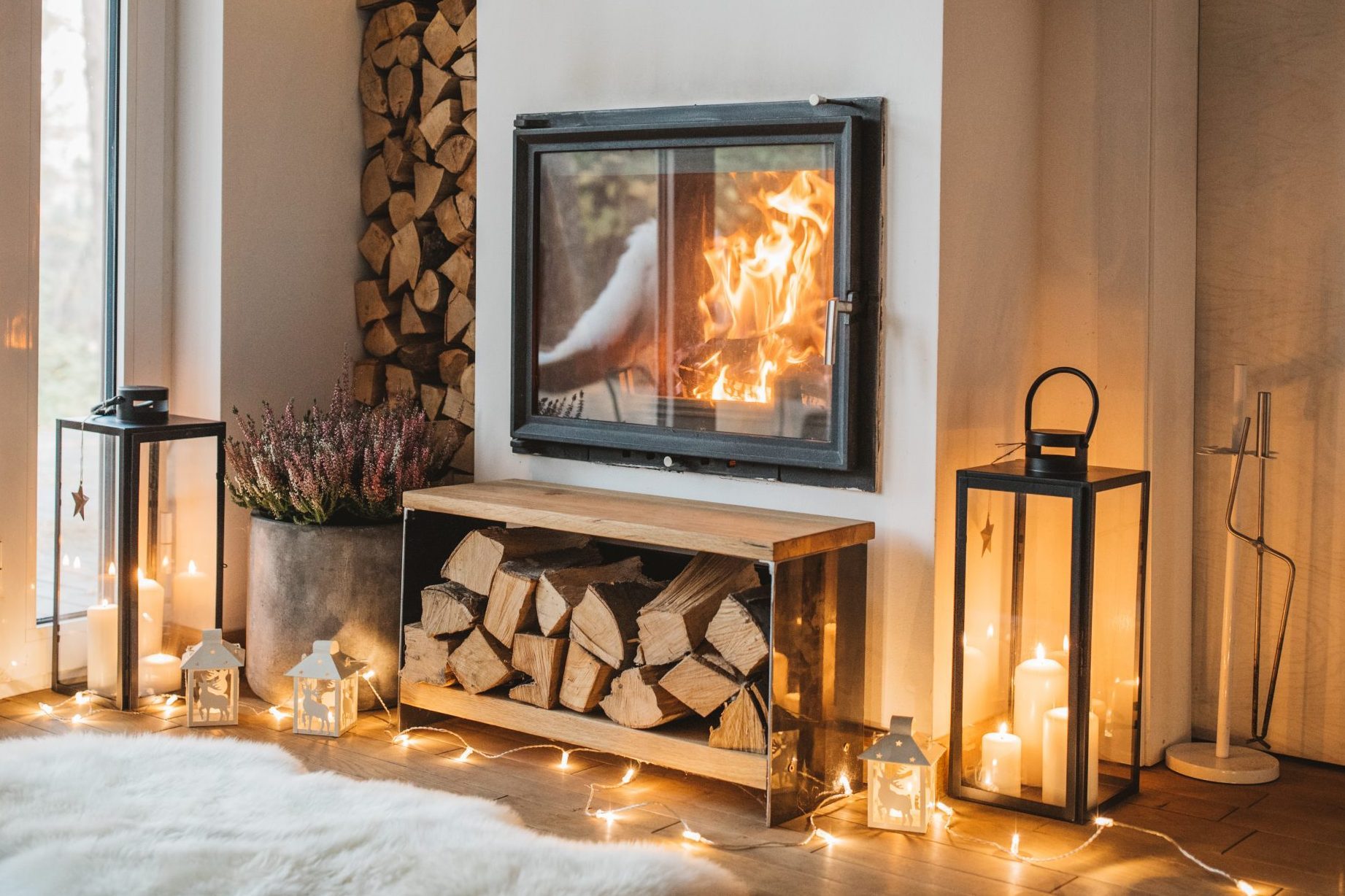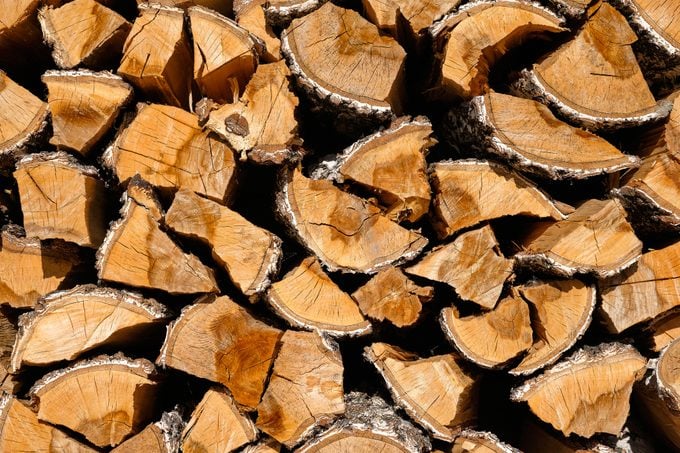If you heat your home or vacation cabin with wood or you're thinking of converting to wood heat, here are our tips for the best firewood for heating.

Best Firewood for Heating

According to a U.S. Census Bureau report about two percent of Americans heat their primary homes with wood, a figure that doesn’t include the thousands of vacation homes and cabins across the country. Not surprisingly, wood consumption for home heating is highest in states where winter temperatures dip the lowest, like northern New England, the Upper Midwest and the Pacific Northwest.
It can be difficult to predict how much firewood to buy and what kind is best. For homeowners in wooded areas, choosing the best firewood for heating basically means going outside and chopping down some trees. But if your primary or vacation home lacks a fellable forest nearby, or you just want to make sure you’re chopping down the right trees, here’s a look at the best types of firewood for home heating.
On This Page
What To Consider When Buying Firewood for Heating
If you’re considering switching to a wood-burning system for your home, or you’ve finally bought that dream vacation cabin in the woods and are wondering how best to heat it, here are some points to consider:
- Stick with hardwood. Hardwood comes from trees like oak, maple and hickory (more on those below). It’s a more densely formed wood compared to softwood, which comes from conifer trees. When it comes to hardwood vs. softwood, hardwood is usually better for heating. Hardwood burns longer and hotter than softwood and leaves behind more coals, meaning it’s easy to restart your fire in the morning.
- Only burn dried wood. Whether you’re buying firewood or cutting your own, patience is a virtue. Wood needs to dry out before it’s optimal for burning. How long you should dry firewood depends on several factors, including the type of wood. Consider seasoned vs. kiln-dried wood. Seasoned wood dries naturally, while kiln-dried firewood is “baked” to remove the moisture more quickly. Hardwood takes longer to season (as much as two years) compared to softwood, which can season in a year to 18 months. Kiln-dried firewood lights faster and burns hotter than naturally seasoned wood, but also costs more. There are a lot of reasons to not burn wood that hasn’t dried. It gives off more smoke and water vapors, can damage your chimney and decrease indoor air quality.
- Burn locally sourced wood. Whenever possible, buy firewood from trees that grow near your home or vacation home. “As firewood is a high-volume/low-margin product, it typically doesn’t go too far anyway,” says Emma Hanson, wood energy coordinator with the Vermont Department of Forests, Parks and Recreation. So you’ll usually pay less for local wood. And by avoiding wood from other parts of the country, you also help prevent the spread of invasive wood diseases and insects.
What To Know About Heat Value
Every type of consumable fuel, whether it’s natural gas, heating oil or wood, has a heat value — the measure of heat the substance gives off when it’s burned. The measurements are in Btus (British thermal units). The formula is difficult to calculate with wood because there are so many variables, including density, dryness and the efficiency of the individual fireplace, wood-burning stove or wood boiler.
The basic rule for home heating: The higher the heat value of the wood, the more efficiently it will warm your home. According to fireplace, hearth, and chimney supplier Northline Express, sugar maple, ash, red oak, beech, birch, hickory, pecan and apple are among the hardwoods with the highest heat values.
So what are firewood measurements? Online shops and firewood delivery services often offer bulk orders. Hanson says that most firewood dealers will deliver a cord of mixed hardwoods. “While the amount of Btus per cord does vary by species,” she says, “the typical homeowner is unlikely to notice a significant difference between a cord of beech and a cord of sugar maple.”
The Best Firewood for Heating

Here are our top picks for the best hardwood firewood for home heating, with some pros and cons:
- Apple. This fruitwood has a high heat value, produces little smoke and gives off a sweet smell when burned. But unless you live in apple orchard country, it’s not practical. It’s expensive and highly sought after.
- Ash. The wood from ash trees is among the most desirable for heating. It gives off low smoke and sparks and has a mild aroma. White ash burns slightly hotter than green. Both trees are prevalent in the Eastern and Southeastern U.S.
- Beech. Common in the Northeast U.S., beech trees are an attractive hardwood for burning thanks to their extreme density and low moisture content. But there are caveats. Beech takes a long time to season, is difficult to split and prone to rot if not kept dry.
- Birch. Birch is a good choice when you want a fire to light quickly and heat up fast. It’s readily available across the Northern U.S., but doesn’t grow below the Appalachian Mountain chain. A downside? Because it burns quickly, you’ll consume more of it.
- Hickory. One of the most popular woods for fireplaces, fire pits, wood-burning stoves and barbecues, dense hickory is quick to light and long to burn, with a high heat value. It also has the classic “smoke” smell associated with outdoor grilling.
- Sugar maple. Also known as hard maple or rock maple, those same trees that ooze maple syrup also make great wood for heating. They offer a high heat value, pleasant aroma and long burn. Sugar maple trees are found across the U.S., which also makes it an appealing option for home heating.
- Mulberry. Mulberry trees are common in Eastern and Midwestern U.S. states and down to the South, making them a good hardwood choice for those areas. Mulberry wood splits easily and has a high heat value, so it’s an easy choice if you’re just learning how to split firewood. But because it gives off a lot of sparks, it’s better for a wood stove, boiler or other closed heating devices.
- Oak. Oak wood, in all its varieties, including white and red, is one of the best woods for heating. It can burn for an extremely long time so it’s ideal for rekindling in the morning. A couple of things to know about oak: It needs to season for at least two years. And because it’s slow-burning, it’s best combined with other faster-burning woods.
- Osage orange. Many people have a love-hate relationship with Osage orange wood. It’s thorny, difficult to split and throws off showers of sparks when burned. So what’s the appeal? Osage orange wood has the highest heat value of any hardwood — it can burn hot enough to warp a wood stove! Because of the sparks and high heat, it’s best burned in closed, outdoor wood boilers, ideally in a mix of other hardwoods to keep the heat under control.
- Pecan. A member of the hickory family, pecan shares a lot of the same characteristics — high heat value and slow burn. Pecan seasons faster than many comparable hardwoods and burns with a pleasant, nutty smell. But because of its relatively high cost, it’s best used as a “feature” wood for a sweet-smelling, open fire rather than in closed stoves.




















